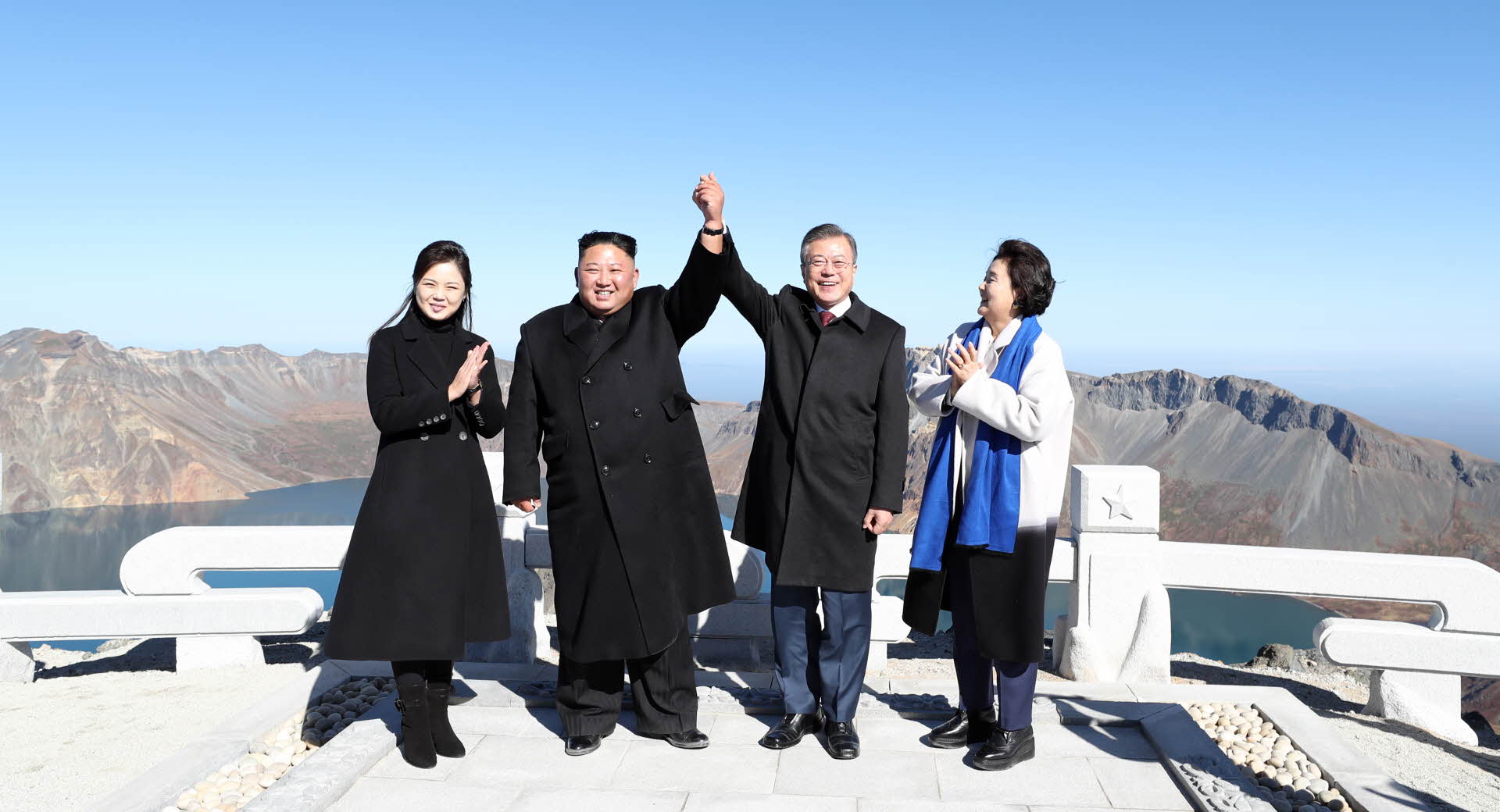A nation must think before it acts.
Over the past few weeks, North Korean media hasn’t been shy in signaling that it wants South Korea to move ahead in the inter-Korean process, and not be held back by the policy aspirations of the United States. While the U.S.-South Korean military alliance may remain strong, it’d be hard to argue after the summit in Pyongyang earlier this week between South Korea’s Moon Jae-in and North Korea’s Kim Jong-un that the two allies are moving in lock-step on the North Korea issue.
The White House continues to insist on “maximum pressure”—heavy economic sanctions on North Korea until it abolishes its nuclear weapons, as of now, still an unlikely conclusion to the unfolding process. China and Russia, meanwhile, continuously urge the U.S. to be more flexible. News from the border region suggests that China may already have eased its previously stern implementation of sanctions on North Korea, though evidence remains inconclusive. To be sure, the U.S. isn’t by any means saying no to further negotiations. U.S. Secretary of State Mike Pompeo, for example, has suggested that he meet with his North Korean counterpart, Ri Yong-ho, at the UN General Assembly in New York next week. But the policy remains that sanctions relief can only come after North Korea’s “complete, verifiable, irreversible denuclearization.”
Meanwhile in Korea: Moon brought a large delegation of South Korea’s biggest conglomerate CEOs to Pyongyang, and the heads of South Korea’s national railway company and tourism agency attended as well. Plans for infrastructure renovations by South Korea in the North are already well underway, and many a South Korean company have plans for investments to be launched in North Korea the second it becomes possible. The Pyongyang Declaration (평양공동선언) that both Moon and Kim signed explicitly refers to “normalizing”—reopening—operations at the shuttered Kaesong Industrial Complex, where South Korean capital met North Korean labor in economic synergy, and the Kumgang Tourism Zone, where South Korean tourists could previously visit a closed-off tourist resort in North Korea. And then there’s Moon’s speech at Rungrado Stadium in Pyongyang, in front of 150,000 applauding and cheering North Koreans. Even with all the inter-Korean warming of late, watching a South Korean president speaking in front of a massive North Korean audience appears somewhat surreal.
At the present time of writing, it remains to be seen whether North Korean TV will air it, but regardless, the news will likely spread fast from the 150,000-strong audience to the rest of the country. To top it all off: the highly symbolic visit to Mount Paekdu in northern North Korea, where Moon and Kim’s entourage spontaneously (at least, so it seemed) broke out in song, with the traditional Korean tune “Arirang.” The mountain isn’t just important in Korean historical mythology, but more contemporarily, it’s a symbol for North Korea’s Kim family clan and its anti-Japanese, revolutionary heritage. (Some Japanese newspapers were quick to take the visit as a common manifestation of both Korea’s anti-Japanese sentiments.)
In other words, contrasts abound. The nuclear issue was not by any means absent through the summit, and North Korea did commit to dismantling its sites for testing and development of nuclear weapons and missiles, as long as the U.S. takes “corresponding steps.” And that’s where the problem remains. No one knows exactly what these steps are, or whether the U.S. is prepared to take them.
Some would argue that these are merely symbolic manifestations of an aspiration by both Koreas to grow closer. The summit merely manifested a desire by South Korea to cooperate with North Korea in business, infrastructure, and culture when sanctions are one day lifted and North Korea and the U.S. agree on a solution to the nuclear issue.
Politics and diplomacy, however, are about far more than formal treaties and agreements. Moon may be carefully towing the line between North Korea and the U.S., and South Korea remains an American treaty ally. But the optics of the summit are that North and South Korea are moving forward, while the U.S. stays behind as the obstacle to unity on the peninsula. Moon and Kim have raised the hopes and shrunk the U.S.’ space for political maneuvering on the North Korea issue. On North Korea, America looks increasingly lonely.




